Venice Terminal Passeggeri
| This page may require cleanup to meet Venipedia's quality standards. Please edit the article and fix the problems. |
The Venice Terminal Passeggeri (VTP) was founded to manage and improve the traffic in the port of Venice.
The shareholders in the VTP are APV Investimenti S.p.A., Finpax S.r.l., SAVE S.p.A. (Venice Marco Polo Airport), Veneto Sviluppo S.p.A. and the Venice Chamber of Commerce.
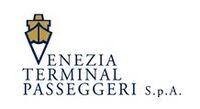 | |
| Director | Roberto Perocchio |
|---|---|
| Address |
Fabbricato 248 - Marittima 30135 Venezia, Italy |
| Telephone | +39 041 240 30 00 |
| Website | http://www.vtp.it/ |
History
In 1997, the port authority founded the Venice Terminal Passenggeri as a specific organization to manage the boats bringing visitors to Venice. The harbor is said to be one of the most strategically placed and the VTP is said to be the best organized passenger terminal in the Mediterranean sea. This has caused the company to grow substantially since it was created, about 10% each year. The rapid growth has had many effects one of which is the need for a change in the layout of the harbor, which was done with a joint effort from the port authority and the VTP. Because of this growth the offices are spread throughout buildings across the Marittima, S. Basilio and Rive dei Sette Martiri. The buildings they operate in can range from newly built to old cargo warehouses converted into multipurpose buildings. The company covers 260.000 sq meters with the terminals occupying 47.267 sq. meters of the area[1].
Mission
The VTP has three main objectives that ensure the harbor is the best that it can be. These three objectives are security, functionality and versatility.
Security
Safety to the passengers and the workers is very important to the VTP. This is why since the VTP was put in place they have increased the safety of the harbor by using new and sophisticated technology. There is 24 hour video surveillance with 100 cameras. The VTP implemented a terminal security plan that follows the international ship and port facility security (ISPS) code. The ISPS code is a set of agreed terms that were put in place by the International Maritime Organization (IMO) after 9-11 for the security of ports and ships. The objectives of these codes are to:
- To establish an international framework involving co-operation between contracting governments, government agencies, local administrations and the shipping and port industries to detect/assess security threats and take preventive measures against security incidents affecting ships or port facilities used in international trade
- To establish the respective roles and responsibilities of all these parties concerned, at the national and international level, for ensuring maritime security;
- To ensure the early and efficient collation and exchange of security-related information;
- To provide a methodology for security assessments so as to have in place plans and procedures to react to changing security levels;
- To ensure confidence that adequate and proportionate maritime security measures are in place.
Functionality
The VTP also takes the functionality into place. They do this by having various amenities and services available to the passengers. The different processes have been designed to make the process easy and enjoyable for the passengers.
Versatility
The VTP accomplishes versatility by designing each terminal to be able to accommodate many different types of functions ranging from shows to exhibitions. For example Cruise Terminal 103 has been designed to simultaneously serve as a cruise terminal as well as a congress centre.
Activities
Company Structure
Ships of the Harbor
The VTP overseas three different types of boats, cruise ships, ferries and hydrofoils. Throughout the past 10 years all 3 forms of transportation have been growing. In 2011 Venezia Terminal Passeggeri S.p.A. achieved the new record of 2,248,453 global passengers which is a growth of 217.56% compared to the 1,398 global passengers in 1997 [2].
Cruise Ships
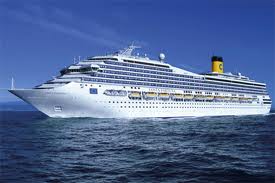
Cruise ships in Venice are the most popular out of the three. Over the past 10 years the cruise terminal has quadrupled the number of cruise ship passengers and is now the 4th most popular port in Europe and the first most popular port in the Mediterranean. .From 1997 to 2009 the traffic has increase by 374.5 percent.
Ferries
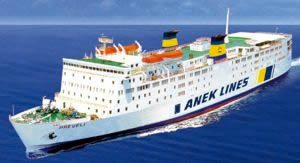
The Ferries depart for Greece ports daily and carry primarily passengers and vehicles. In a year there are 357,664 p[assengers and 159,550 vehicles. They typically Dock in Marittima terminal 123.
Hydrofoils
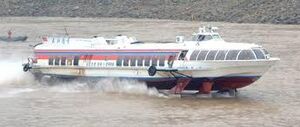
In a year there are 435 calls with 109,127 passengers. The hydrofoils make for fast connections to Croatia and Slovenia. They typically dock in San Basilio.
Regulations of the Harbor
Maximum Ship Dimension
- Length: LOA 340 m. (1115' 06")
- Width: no limit
- Ship's Max Draught: 8,70 m. (28' 07")
- Air draught: no limit in Venice Marittima, 53 m. (173' 11") in Marghera (Commercial and Industrial Port)
- Anchorage: yes, at roadstead
- Tidal movement/Range: about 1 m. (3' 03")
Maximum berthing capacity
- 12
Areas of The Harbor
Depot areas
- 40 buses
- 1768 cars
- 21 spaces reserved to disabled and reduced mobility passengers
Terminals
| Terminal | Primarily used for | Year Opened | Size | Ammemities |
|---|---|---|---|---|
| Terminal 1 Isonzo | Cruise Ships | 2009 | 8,681 sq. m. | Fully licensed bar and café, A duty free shop, AVIP Lounge in the Departure Hall,A 1,432 sq. m panoramic terrace, Cable and Wi Fi |
| Terminal 107 | Cruise Ships | Late 1990's | Departure hall 107: 2.740 sq. mtrs, Arrival hall 107: 2.550 sq. mtrs. | Good access to the land taxis, water taxies and car depots, Large ramps and easy mobility for handicapped passengers, Food and beverage area, Wi- Fi |
| Terminal 108 | Cruise Ships | Late 1990's | Departure hall 108: 2.750 sq. mtrs, Arrival hall 108: 2.800 sq. mtrs. | Good access to the land taxis, water taxies and car depots, Large ramps and easy mobility for handicapped passengers, Food and beverage area, Wi- Fi |
| Terminal 117 | Cruise Ships | 2006 renovated from old warehouse | Departures Hall: 2.705 sq. mtrs, Arrivals Hall: 1.620 sq. mtrs. | Duty free shop, Near land taxis and car depot, Cable and Wi- Fi |
| Terminal 103 | Cruise Ships | 2003 | Departure hall: 2.741/3.703 sq. mtrs, Arrival hall: 3.363 sq mtrs. | Has dedicated water taxies, Water shuttle, Wi fi |
| Terminal 123 | Ferries | 1999 | 4.894 sq. mtrs. | Café, Minimarket, Tobacco shop, Food and beverage vending machines |
| Terminal St. Basilio | Accommodates medium-size cruise ships, mega-yachts and high speed hydrofoils & catamarans | Built in 1980's renovated in 1990's | 1.634 sq. m | Vending machines, Wi-Fi |
Docks
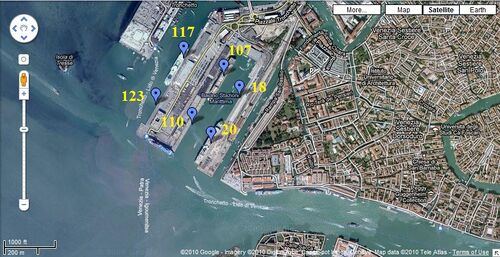
| Dock | Terminals using the dock |
|---|---|
| 107 | 107 and 108 |
| 110 | Terminal 1 Isonzo |
| 20 | 103 |
| 18 | 103 |
| 123 | 123 |
| 117 | 117 |
